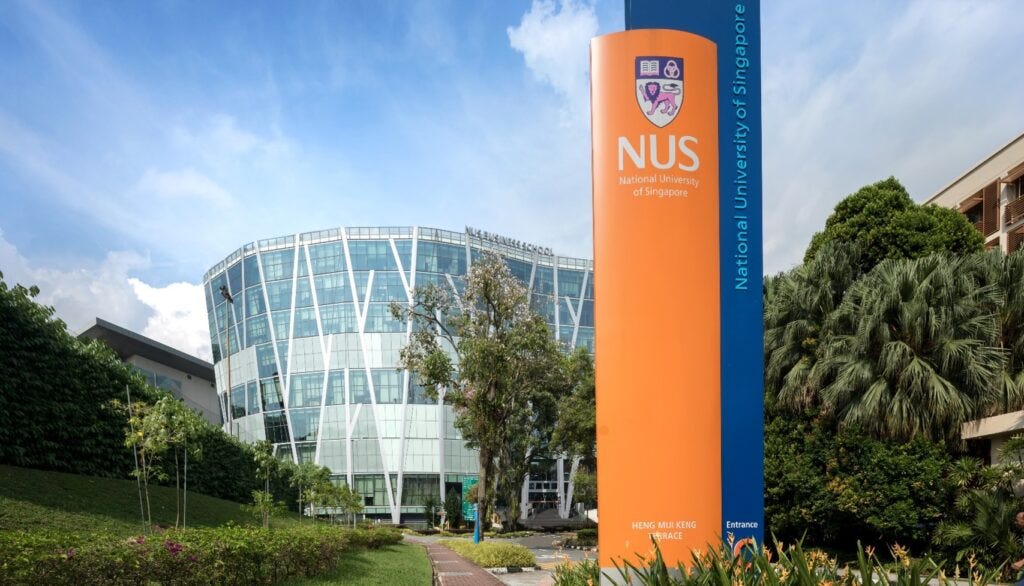🎓 Higher Education at a Crossroads: NUS and the Future of Learning in Southeast Asia
Collaboration, autonomy, and innovation redefine what universities can be 🌏📚

🎯 The Main Takeaway
Across Southeast Asia, universities are rethinking what higher education means in a fast-changing world. At the center of this shift stands the National University of Singapore (NUS) — a model for how academic excellence, entrepreneurial drive, and regional collaboration can coexist.
At the NUS Innovation Summit 2025 in Jakarta, President Professor Tan Eng Chye urged educators to move beyond prestige and rankings toward a new focus: developing human capital and real-world impact.
🔍 Why It’s on Our Radar
🧭 Cross-border collaboration — NUS partners with UI, UGM, ITB, and IPB to build regional research and talent pipelines.
🎓 Autonomy with accountability — Since becoming an autonomous non-profit in 2006, NUS has operated with the flexibility of a private institution while remaining publicly accountable.
💡 A regional mirror — Its approach reflects Southeast Asia’s larger challenge: balancing quality, access, and innovation in higher education.

⚖️ What’s at Stake
Rankings tell only part of the story.
“What truly matters is whether our graduates can find meaningful work,” said Prof. Tan Eng Chye.
Singapore’s Ministry of Education measures university success through graduate outcomes — tracking employability and lifelong learning months after graduation — not global league tables. That mindset shapes NUS’s mission: to develop human capital for the region, not just credentials for individuals.
It’s a lesson that neighboring systems in Southeast Asia are starting to embrace.
📸 The Big Picture
At the Innovation Summit in Jakarta, NUS convened academics, alumni, and industry leaders from both Indonesia and Singapore to discuss the future of AI, digital transformation, and deep-tech education.
🧬 Joint talent-pooling aims to connect Indonesia’s growing research base with Singapore’s innovation infrastructure.
🤝 Alumni networks now serve as bridges — linking internships, venture creation, and cross-border research.
🧩 Yet two challenges remain: limited R&D spending in Indonesia (under 0.3% of GDP) and a shortage of skilled tech talent (fewer than one engineer per 5,000 people).
💡 Inside the Classroom and Beyond
Professor Simon Chesterman, NUS Vice Provost for Education, said the future lies in interdisciplinary learning.
“The world’s problems don’t fit neatly into one discipline. We need ecosystems where engineers, lawyers, and artists work together, for instance.”
NUS now offers 175 AI-related modules and promotes learning inside and outside campus — focusing on creativity, ethics, and collaboration, where AI still falls short.
🚀 The Innovation Engine
Through NUS Enterprise, founded in 1998, the university nurtures startups and builds entrepreneurship ecosystems across Asia.
Its BLOCK71 network now spans Jakarta, Bandung, and Yogyakarta, connecting students, founders, and investors.
“It’s not about exporting Singapore’s model,” said Professor Benjamin Tee, AVP of NUS Enterprise.
“It’s about co-creating — developing talent and opportunities together.”
These collaborations have produced regional internships, funding grants, and mentorship programs that link research with real-world impact.
❤️ Why This Hits Home
For Southeast Asia, NUS is more than a university — it’s a living experiment in shared growth.
By combining autonomy with accountability, and competition with collaboration, it shows how education can be both global and deeply local.
🌐 The Regional Stakes
🇮🇩 Partnerships with Indonesian universities expand research in AI, sustainability, and health tech
🌏 Singapore’s higher-education reforms inspire similar autonomy debates across ASEAN
🤝 The NUS model highlights how regional universities can pool talent, not just compete for it
📰 Beyond the Headlines
🧭 Founded in 1905, NUS is home to over 40,000 students from more than 100 countries.
💻 Through NUS Overseas Colleges, students gain hands-on entrepreneurial experience in global innovation hubs.
🌱 The university contributes roughly 3% of Singapore’s national research output, while accounting for about 1% of total R&D investment — a sign of its productivity and focus.
✨ Bottom Line
In Southeast Asia’s race to educate the next generation, NUS represents a quiet revolution — autonomy that fuels innovation, partnerships that bridge borders, and learning that lasts long after graduation.
📰 Need More Angle
Independent Observer Shaping the future: universities at the heart of AI and innovation
Gizmology NUS Strengthens Innovation Collaboration between Singapore and Indonesia Through NIF
(QOB/ARS)




